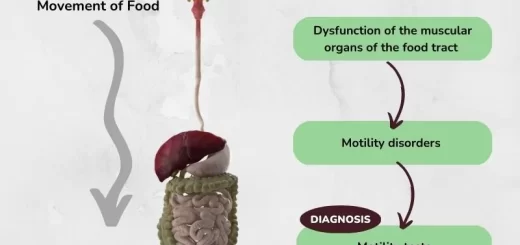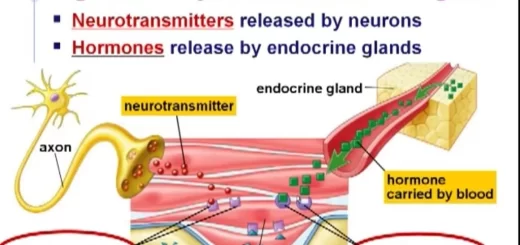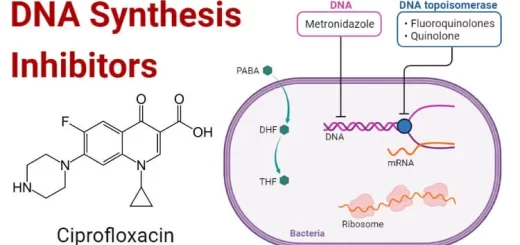Arm structure, compartments, muscles, anatomy and Cubital Fossa contents
The arm or upper extremity is a functional unit of the upper body, It consists of three sections, the upper arm, forearm & hand, It contains 30 bones. It consists of many nerves, blood vessels (arteries and veins), and muscles. It is the part of the upper limb between the glenohumeral joint (shoulder joint) to the fingers.
Compartments of the arm
The arm is divided into two compartments anterior and posterior by:
- The deep fascia of the arm.
- The humerus.
- The lateral and medial intermuscular septa.
Medial intermuscular septum
- It is a fascial sheet that connects the medial supracondylar ridge of the humerus with the deep fascia of the arm.
- It is pierced by the ulnar nerve at the middle of the arm.
Lateral intermuscular septum
- It is a fascial sheet that connects the lateral supracondylar ridge of the humerus with the deep fascia of the arm.
- It is pierced by radial nerve at the junction between the middle and lower thirds of the arm.
Anterior compartment of arm contents
- Flexor muscles; coracobrachialis, brachialis, and biceps brachii.
- Brachial artery and its 2 venae comitantes.
- Basilic vein (at the upper half of the arm).
- Median nerve.
- Ulnar nerve (in the upper half of the arm).
- Musculocutaneous nerve.
1 – Coracobrachialis muscle:
- Origin: Tip of coracoid process (with short head of biceps brachii).
- Insertion: Middle of medial aspect of the humerus.
- Nerve supply: Musculocutaneous nerve.
- Actions: It helps in flexion and adduction of the arm.
Changes that occur at the level of insertion of coracobrachialis:
- The median nerve: crosses in front of the brachial artery from lateral to medial.
- The ulnar nerve pierces the medial intermuscular septum to reach the posterior compartment.
- The radial nerve & profunda brachii artery: descend on the back of the humerus through the spiral groove.
- The basilic vein pierces the deep fascia to ascend the medial to the brachial artery.
- The medial cutaneous nerve of the arm and forearm: pierces the deep fascia to pass through the superficial fascia.
- The nutrient artery of the humerus enters into the bone.
2 – Biceps brachii muscle
Origin:
- Short head: from the tip of the coracoid process.
- Long head: from the supraglenoid tubercle of the scapula (intracapsular, extrasynovial).
Insertion:
- Posterior part of the radial tuberosity.
- Bicipital aponeurosis into deep fascia of the cupital fossa.
Nerve supply: Musculocutaneous nerve.
Actions:
- Flexor of the elbow.
- Powerful supinator of the flexed forearm.
- Long head helps in the stabilization of the shoulder joint.
The bicipital aponeurosis separates the brachial artery from the median cubital vein.
3 – Brachialis muscle
- Origin: From the lower half of the front of the shaft of humerus and the front of the two intermuscular septa.
- Insertion: Coronoid process of the ulna and ulnar tuberosity.
- Nerve supply: Musculocutaneous nerve & radial nerve for its lateral part.
- Actions: The muscle is the main flexor of the elbow joint.
Posterior compartment of the arm
Contents:
- Triceps muscle.
- Radial nerve.
- profunda brachii vessis.
- Superior ulnar collateral vessis.
- Posterior branch of inferior ulnar collateral.
Triceps muscle
Origin:
- Long head; from the infraglenoid tubercle.
- Lateral head; from the back of humerus above the spiral groove.
- Medial head; from the back of humerus below the spiral groove.
Insertion: Olecranon processof ulna.
Nerve supply: Radial nerve.
Actions:
- Main extensor of the elbow.
- Long head shares in stability of shoulder.
- The long head helps in the adduction of the abducted arm.
Musculocutaneous nerve (C5,6,7)
Origin: It is a branch of the lateral cord of the brachial plexus.
Termination: It terminates by continuing as the lateral cutaneous nerve of the forearm.
Course: The nerve descends lateral to the 3rd part of the axillary artery between it and the coracobrachialis then it passes between the biceps and brachialis.
Branches: Muscular branches to:
- Two heads of biceps brachii.
- Coracobrachialis.
- The greater part of the brachialis
Median nerve (C.5,6,7,8, T.1)
Origin:
- Medial root; C.8, T.1 (from medial cord brachial plexus).
- Lateral root; C.5,6,7 (from lateral cord brachial plexus).
- The two roots unite to form the median nerve lateral to the 3rd part of the axillary.
Median nerve in the axilla and arm
Course:
- The nerve descends lateral to 3rd part of the axillary artery and the upper half of the brachial artery.
- At the middle of the arm (level of insertion of coracobrachialis) it crosses in front of the brachial artery.
- It then descends medial to the artery down to the cubital fossa.
- It enters the forearm by passing between the heads of pronator teres.
Branches: The median nerve has no branches in the arm.
Ulnar nerve (C.7,8, T.1)
Origin:
- It is a branch of the medial cord of the brachial plexus.
- Fibres of C7 come from the lateral root median nerve.
Ulnar nerve in the axilla and arm
Course:
The nerve descends close to the medial side of the 3rd part of the axillary artery and the upper half of the brachial artery. At the middle of the shaft of humerus (level of insertion of coracobrachialis) it pierces the medial intermuscular septum to reach the posterior compartment. It descends down to the back of the medial epicondyle. It enters the forearm by passing between the 2 heads of the flexor carpi ulnaris muscle.
Branches: The ulnar nerve has no branches in the arm.
Radial nerve (C.5,6,7,8, T.1)
Origin: From the posterior cord of the brachial plexus.
Radial nerve in the axilla and arm
Course: The nerve descends posterior to 3rd part of Axillary artery and brachial artery. Then, it passes in the spiral groove of the nerve where it lies between the medial and lateral heads of the triceps. Thereafter, it pierces the lateral intermuscular septum to reach the front of the arm where it descends between the brachialis and brachioradialis muscles.
Branches in the axilla:
- Muscular branches to long and medial heads of triceps.
- Posterior cutaneous nerve of the arm.
Branches in the arm: (in the spiral groove):
- Muscular branches to the lateral and medial heads of triceps.
- Muscular branches to the anconeus muscle.
- Lower lateral cutaneous nerve of the arm.
- Posterior cutaneous nerve of the forearm.
Branches in the groove between brachialis and brachioradialis:
- Muscular branches to the lateral part of the brachialis.
- Muscular branch to brachioradialis.
- Muscular branches to extensor carpi radialis longus.
Cubital Fossa
- The cubital fossa is a triangular depression in the front of the elbow.
Boundaries:
- Medial boundary; pronator teres muscle.
- Lateral boundary; brachioradialis muscle.
- Base; directed upwards and is formed by an imaginary line connecting the 2 humeral epicondyles.
Apex: Directed downwards and formed by the point of overlap of brachioradialis over pronator teres.
Roof: is formed by:
- Skin.
- Superficial fascia containing median cubital vein, parts of basilic and cephalic veins, medial and lateral cutaneous nerves of the forearm.
- Deep fascia.
- Bicepital aponeurosis.
Floor: Brachialis muscle (medially) and supinator muscle (laterally).
Contents: From lateral to medial:
- Biceps tendon.
- Brachial artery.
- Median nerve.
Brachial artery
Origin: It begins at the lower border teres major muscle as a continuation of the axillary artery.
Termination: The brachial artery ends opposite the neck of the radius by dividing into two terminal branches the radial and ulnar arteries.
Course:
- The artery descends in the anterior compartment of the arm accompanied with its 2 venae commitants.
- Along its whole course, the artery is relatively superficial.
- The artery is closely related medially to the ulnar nerve and basilic vein (in the upper half of the arm).
- The artery is closely related laterally to the median nerve in the upper half of the arm. The median nerve crosses in front of the artery, from lateral to medial, about the middle of the arm. Then the median nerve descends along the medial side of the brachial artery down to the cubital fossa.
Branches:
- Profunda brachii artery, the largest branch that accompanies the radial nerve in the spiral groove. It gives an ascending branch. The profunda brachii ends by giving anterior and posterior descends arteries that share in anastomosis around the elbow.
- Muscular branches.
- Nutrient artery to the humerus.
- Superior ulnar collateral artery.
- Inferior ulnar collateral artery: which divides into anterior and posterior branches.
- Terminal branches:
- Radial artery.
- Ulnar artery.
Forearm bones, anatomy, function & Skeleton of the hand
Flexors of forearm, Forearm muscles, structure, function & anatomy
Axilla contents, Axillary lymph nodes & Stages of the plexus
Bones of upper limb structure, function, types & anatomy
Back muscle anatomy, types, structure, importance & names
Bone (Osseous Tissue) types, structure, function & importance
Types of bones, Histological features of compact bone & cancellous bone



